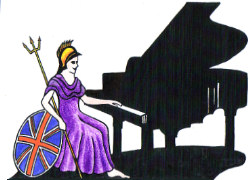Teachers, Accompanists and Piano Entertainers in the UK

UK Piano Page

High Street Llanerchymedd
Llanfairpwllgwyngyll, Anglesey LL65 3LS
Wales/Cymru
We are a retail Musical Instrument Company in
Verve House
Sunningdale
Ascot, Berkshire SL5 0DJ
England
Handel Pianos is a family run business and our
Houldsworth Business & Arts Centre
Houldsworth Street
Stockport, Cheshire SK56DA
England
Piano House Ltd have been based in the Greater
184 St. Ann's Road
Haringey, London N15 5RP
England
J. Reids supply new and fully restored pianos from
142 Edgware Road
Marble Arch, London W2 2DZ
England
Jaques Samuel Pianos has been providing pianos
Music Festival for performers and guests Our 10th
18-06-2022 12:30PM
The Morecambe Bay Piano Group was set up to extend
11-12-2021 01:00PM
The Morecambe Bay Piano Group was set up to extend
08-01-2022 01:00PM
The Morecambe Bay Piano Group was set up to extend
12-02-2022 01:00PM